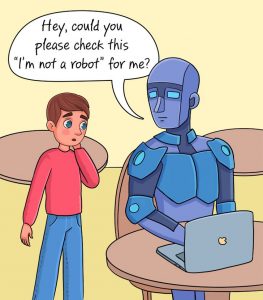I initially viewed AI as a tool for information retrieval and task automation. However, delving into generative AI (GPTs) and collaborative learning design during the ONL course has reshaped my perspective significantly. This exploration has revealed AI as not just a passive aid but as an active co-learner and challenger, fundamentally reshaping the dynamics of collaborative learning.
One of the most compelling aspects of AI in collaborative learning is its capacity to function as a co-learner alongside students. AI systems boast the ability to access and process vast amounts of information at lightning speed. This empowers them to not only keep pace with students’ learning journeys but also uncover patterns and hidden connections within the data that human learners might overlook.
A study published by Weiqi Xu, investigated the impact of AI-powered collaborative learning platforms on student performance in STEM subjects. The study found that students who interacted with AI co-learners displayed a significantly deeper understanding of the material compared to those in traditional learning groups. This improvement was attributed to the AI’s ability to identify knowledge gaps and present information in a way that addressed those specific needs.
Beyond its co-learning capabilities, AI can also act as a challenger within collaborative learning settings. By posing targeted questions and challenges, AI can push students outside their comfort zones and ignite critical thinking skills. It can tailor challenges to individual student strengths and weaknesses. This personalized approach ensures that students are challenged appropriately, neither feeling overwhelmed nor under-stimulated. Research conducted by Ilie Gligorea explores this concept, demonstrating that AI-driven challenge design in collaborative learning environments led to a measurable increase in student engagement and critical thinking abilities. It can simulate the Socratic method by prompting students with probing questions that encourage them to analyze and justify their thought processes. This can lead to a deeper understanding of the underlying concepts and the development of strong argumentation skills.
Integrating AI into collaborative learning brings exciting possibilities, but also challenges that need to be addressed. Potential biases in AI systems and the need for teacher training in using these tools effectively are hurdles to overcome. Most importantly, ensuring AI complements human interaction in the classroom is crucial.
The future of learning is likely to be a collaborative endeavor between humans and AI. By utilizing AI’s strengths as a co-learner and challenger, we can create dynamic and engaging learning environments that empower students to reach their full potential. As research in this field progresses, it is crucial to prioritize the ethical implications of AI in education and ensure that technology serves as a tool to enhance, not replace, human interaction in the classroom.
References
Xu, W., Ouyang, F. The application of AI technologies in STEM education: a systematic review from 2011 to 2021. IJ STEM Ed 9, 59 (2022). https://doi.org/10.1186/s40594-022-00377-5
Gligorea, I. et.al. Adaptive Learning Using Artificial Intelligence in e-Learning: A Literature Review. Educ. Sci. 2023, 13, 1216. https://doi.org/10.3390/educsci13121216


April 28, 2024 at 9:01 pm
Hi Saad, I completely agree with your perspective on AI having potential to act as an active co-learner that can facilitate deeper understanding of a subject and facilitate collaborative learning. Besides, your take on AI being a challenger that focusses personalised learning is also well thought. Thank you for this informative reflection.
April 29, 2024 at 6:00 am
Excellent reflection on the potential of Generative AI (GPTs) in collaborative learning! I like how you emphasized the importance of AI as a complementary tool, not a replacement for human interaction in the classroom.
April 29, 2024 at 11:38 am
Great post! I really enjoyed reading it!